The northernmost kingdoms of Europe never had much of a high aristocracy; in marked contrast to Naples, which had hundreds of ducal and princely titles, Norway, Sweden, Denmark had almost none. Neither did the northern German principalities like Brandenburg or Pomerania. At most, nobles were junkers, barons, and occasionally counts. What this northern domain did have, however, was a very interconnected system of court and family networks, as well as an aversion to the systems of primogeniture that were adopted in western and southern Europe. As a result, the nobility of this northern, Scando-Germanic world allowed younger sons to marry and create numerous sub-branches within the patrilineal dynasty, which then motivated these younger sons to move around to seek employment in whatever courts they could, from Berlin to Stockholm, or further afield in Vienna, Paris or even St Petersburg (as can be seen on a recent blog post, Lieven).
One such family were the Wedels. Originally from Holstein, but ultimately with branches in Pomerania, Denmark-Norway, Oldenburg, Hanover and Prussia—and it was in this last branch that we find one single prince, which thus qualifies this family for inclusion in this website. And remarkably, his would be one of the very last princely titles created in all of Europe, on the eve of the Great War in 1914, before the walls came tumbling down for the high aristocracy and no further titles of this rank were created. The Prince von Wedel’s story is a fascinating one: a close advisor of Kaiser Wilhelm II and one of the few who advocated for moderation in foreign affairs. As such, he was appointed as viceroy to the sensitive frontier region of Alsace-Lorraine in 1907, but was forced to resign just as things were heating up in 1914.
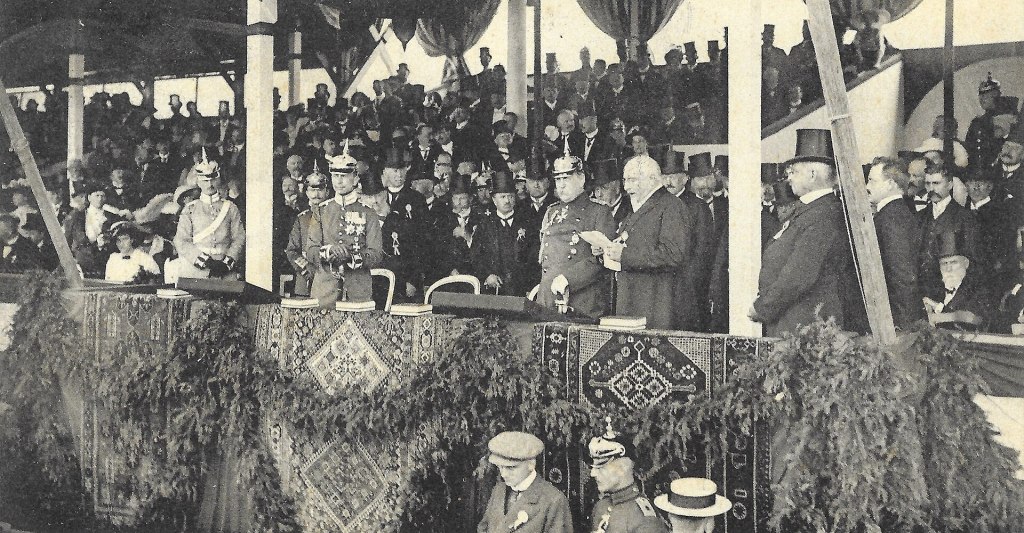
Before we look closer at his story, we need to go back to Holstein in the twelfth century. The County of Holstein was located just north of the city of Hamburg, and the lords of Wedel owned villages close to the seat of the Counts of Holstein, whom they served. Wedel itself is on the river Elbe, just downriver from Hamburg. The earliest records appear in 1149 for Heinrich von Wedel as secular administrator (vogt) of the monastery of Ottenbüttel in Holstein.
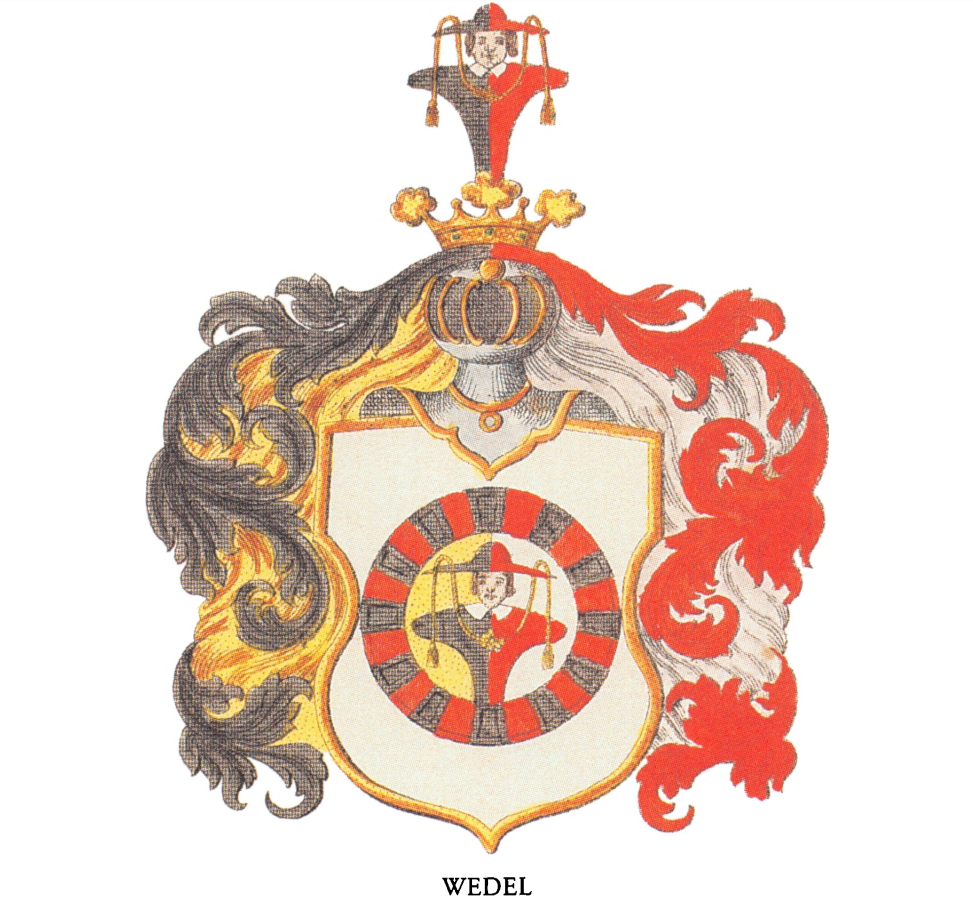
In the early 1300s, the Holy Roman Emperor granted the family ten fiefs, with towns and castles, in western Pomerania, as part of the expansion of the German nobility into the east, across the Oder river. They founded a new town they named for themselves, Neu-Wedel (or Neuwedell, today’s Drawno in Polish), and also built a ‘falcon’s castle’ at Falkenburg (Zlocieniec). Neuwedell Castle, built in 1313, was on the river Drawa. It passed through various stages of overlordship, from the Teutonic Order to the kings of Poland, then the dukes of Pomerania; and when that family went extinct in 1637, Neuwedell was detached from that province and attached instead to a new district of eastern Brandenburg, Arneswalde. Only in 1938 was it returned to Pomerania, and thus to Poland after the war. By then the castle was a ruin, having been destroyed in the Seven Years War in the mid-eighteenth century.

Another branch was based at Kremzow (Krępcewo). There was a castle here from the thirteenth century, and the Wedel castle was eventually surrounded by over 5000 acres of rich agricultural land—for centuries they were amongst the richest landowners in the entire region. A new castle was built in 1700 (leaving the old castle to serve as a granary) and rebuilt again in 1820 in a neoclassical style. This lasted until World War II and was dismantled shortly after.
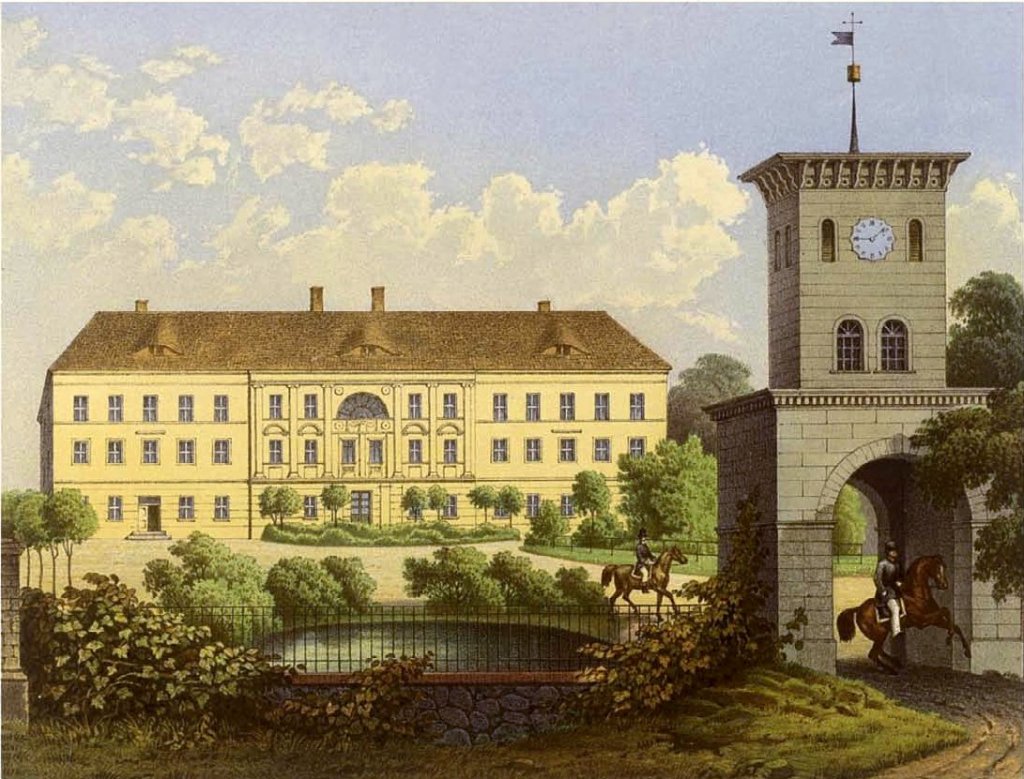
By the mid-fourteenth century there were several lines: the senior branches at Neuwedell and Stavern (in the Neumark, part of Brandenburg)—which merged at the end of the sixteenth century—and junior branches in Kremzow and Uchtenhagen (now Kryzwnica, near Stargard), both in Pomerania. This youngest branch eventually founded the Danish/Norwegian branch and the Prussian branch, which will be the main focus below.
Prominent early members include Hans von Wedel in the fourteenth century who was the master of the court of the Elector of Brandenburg, and another Hans in the fifteenth century who served as a diplomat and negotiated a crucial peace between the King of Poland and the knights of the Teutonic Order in 1445. The most famous early member was Lupold von Wedel, from the Kremzow branch, who was a travel writer and mercenary soldier, fighting variously against the Turks in Hungary or the Catholics in France. He travelled to the Holy Land, Egypt, Italy and Spain—even to England and Scotland, and later wrote about his experiences. He died in about 1615.
The most famous member of the senior line, Neuwedell, in the seventeenth century was Ernst Rüdiger, who became director of the superior courts for the Elector of Brandenburg in 1695, and revised the legal regulations of these bodies for the Elector after he was elevated in rank to King in Prussia in 1700.
In the eighteenth century there were various Prussian generals from this branch—most prominent was Carl Heinrich, a lieutenant-general in the War of Austrian Succession and the Seven Years War, considered one of Fredrick the Great’s most important generals, notably aiding the King’s great victory over the Austrians at Leuthen in 1757. In 1760, he was appointed Prussian Minister of War. His reputation was so high that by the time he died in 1782, two of his daughters had married into the princely house of Anhalt-Dessau.
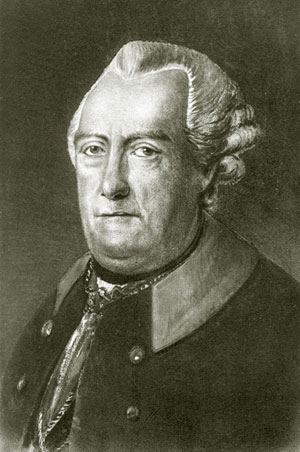
Another important marriage in this century, was Maria von Wedel’s union of 1767 with General Peter Panin. The bride was the daughter of a General Rüdiger von Wedel who had fought in Russian service in the 1730s, while the groom was the younger brother of Nikita Panin, chief minister of Empress Catherine II of Russia. The son of Baroness Maria Vedel (as spelled in Russian), Nikita Panin, became the Chancellor of Russia for Emperor Paul, 1799-1800.
One branch of the family was based in Piesdorf, a manor one of the Pomeranian lords acquired in 1755, located in a district of western Brandenburg called the Saalkreis (along the river Saale, south of Magdeburg). Wilhelm von Wedell (this branch’s preferred spelling) served the Prussian kings as President of the Province of Saxony (1844) then of the Province of Silesia (1845-48). He was removed for neglecting to manage crop failures or suppressing the protest movements that broke out there as a result in the revolutionary year of 1848 (he himself had to flee its capital, Breslau). He ended his career as a member of the Prussian House of Lords, 1856-1866. In retirement he remodelled Piesdorf Schloss in a neo-renaissance style. After the Second World War it served as a children’s home, but since the 1990s has been run as a private estate.
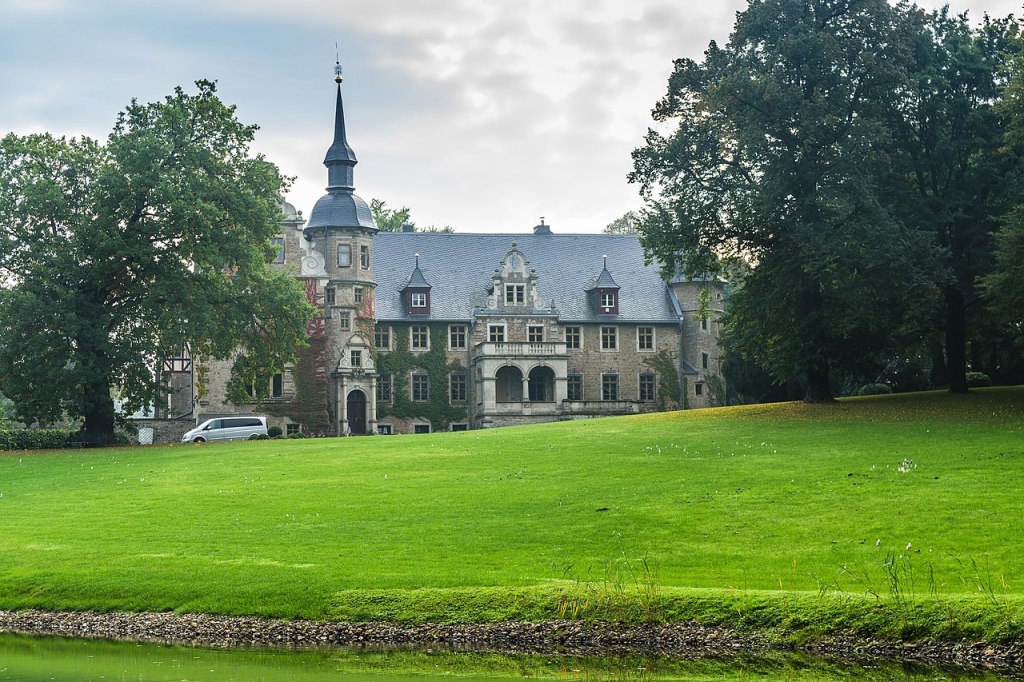
In the later nineteenth century, another Wilhelm von Wedell-Piesdorf rose to prominence in the Prussian and then Imperial German politics. He became an administrator in the Prussian government in the 1860s and was appointed District President of Magdeburg in 1881. In 1884 he was elected to the German Reichstag and soon after was chosen to be its president, holding this office until 1888, when he was appointed by the Kaiser to be Minister of the Royal Household, a post he held until 1907. In 1912 he was selected as president of the Prussian House of Lords, a post he held until he died in 1915. Wedellplatz in Berlin was named for him in 1910, in a suburban area on the route towards Potsdam—but was eliminated after 1937.

In the twentieth century some of these senior branches revived the ancient name borne by the medieval Wedel lords: Hasso. One of these was a Nazi general who led the Wehrmacht propaganda corps during the war. Another Hasso was a World War I flying ace, who also flew in World War II and was shot down over Kent in 1940. But the more famous of these aces was Erich Rüdiger von Wedel, the last commander of the elite flying unit ‘Jasta’ (the Jagdstaffel 11), from September to November 1918—this was the same unit that had first been led by the famous ‘Red Baron’ in 1917.

Wedels and Wedells were seemingly everywhere in the military history of Prussia and Imperial Germany. But these branches never rose above the rank of baron. So we should look now at the junior lines, those that first established themselves in Denmark and Norway and were later known as Wedell af Wedellsborg and Wedel af Jarlsberg (‘af’ being ‘of in Danish), rose to the ranks of counts, and also spawned one final junior branch that returned to Prussia and produced the family’s one single prince.
In the early seventeenth century, one of the lords von Wedel from Pomerania, Jürgen Ernst, became a colonel in the army of Pomerania, at a time when much of this territory was in fact governed by the Swedes. He married a woman from the Ahlefeldt family, originally from Schleswig, but by now quite prominent in Denmark. They had (among others), two sons who founded new lineages in Denmark: Wilhelm Friedrich (d. 1706), created Count of Wedell-Wedellsborg in 1672; and Gustav Wilhelm (d. 1717), created count of Wedel-Jarlsberg in 1684. We will look at the Wedellsborg line first, then Jarlsberg.
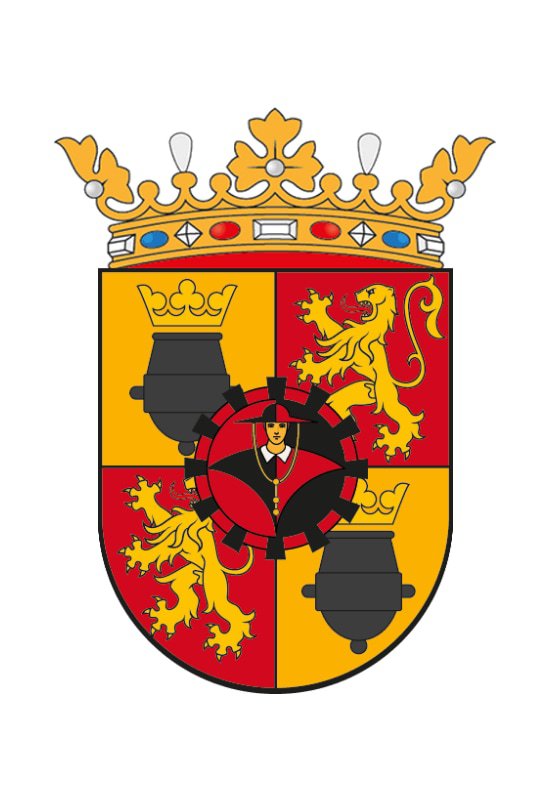
Wedellsborg itself was a new estate created by the King of Denmark on the western side of the island of Funen (near Husby). The title count was relatively rare in Denmark, and in fact it was not just a greve (count) but a lensgreve, which indicates a superior status (like a landgraf, a territorial count, in German). The castle had been built (as Iversnaes) by the Gyldenstierne family in the early sixteenth century; and was rebuilt by the new owners in 1706 and again in 1920. By that time its estates had grown to about 3500 hectares, the largest estate on Funen.

Of this line, the most prominent member in the eighteenth century was Baron Adam Ditlev (1782-1827), who was appointed by the King of Denmark in 1810 to be governor of Lister and Mandal counties in Norway (in the far south, today’s western Agder District), but when Norway became independent of Danish rule in 1814, he returned home.
At the start of the nineteenth century there were three brothers: the eldest, Hannibal, tended the estates at Wedellsborg; the second, Joachim, was a lieutenant-general and founded a junior line of Wedell-Neergaard; while the third, Ferdinand, rose in the court and was appointed Master of the Hunt of the King of Denmark (hofjaegermester). He was succeeded in this office mid-century by his son Frederik Julius, but in 1884 this office passed to the senior line.
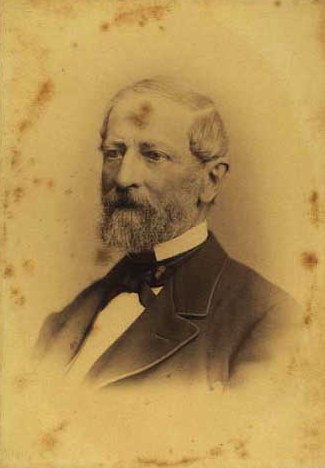
Vilhelm (or Bendt), Count of Wedellsborg, was Master of the Hunt of Denmark, and was succeeded in this office by his son Julius, in 1918. In the 1920s, the territorial jurisdictions of the Danish feudal counties were abolished, but the lands were retained. But in 1907, Count Julius had augmented these significantly by marrying an heiress, Inger Dorthe Krag-Juel-Vind-Frijs, Countess of Frijsenborg
Frijsenborg is in eastern Jutland, not far from Aarhus. A house was built here in the 1660s by the Frijs family, who were created counts in 1672. It was expanded and rebuilt in the nineteenth century (and the family added several other inheritances, hence the multiple hyphenations), and by the time the county was dissolved in 1922 it was one of the largest single estates in Denmark, with about 6000 hectares of forests and agriculture. The castle still exists, but is not open to the public, so I was unable to visit it in my recent driving tour of Jutland.
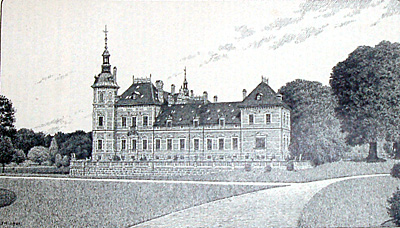
Count Julius’ son, Count Tido (or Charles Bendt Tido), continued to act as Master of the Hunt at the Danish court until he died in 1982, and was succeeded by his son, Count Bendt Tido Hannibal (b. 1975), who is the head of this branch of the Wedell family. As he owns both the Wedellsborg and Frijsenborg estates, he is Denmark’s largest landowner. He also owns Wedells Palace in Copenhagen, just across the canal from Christiansborg Palace.
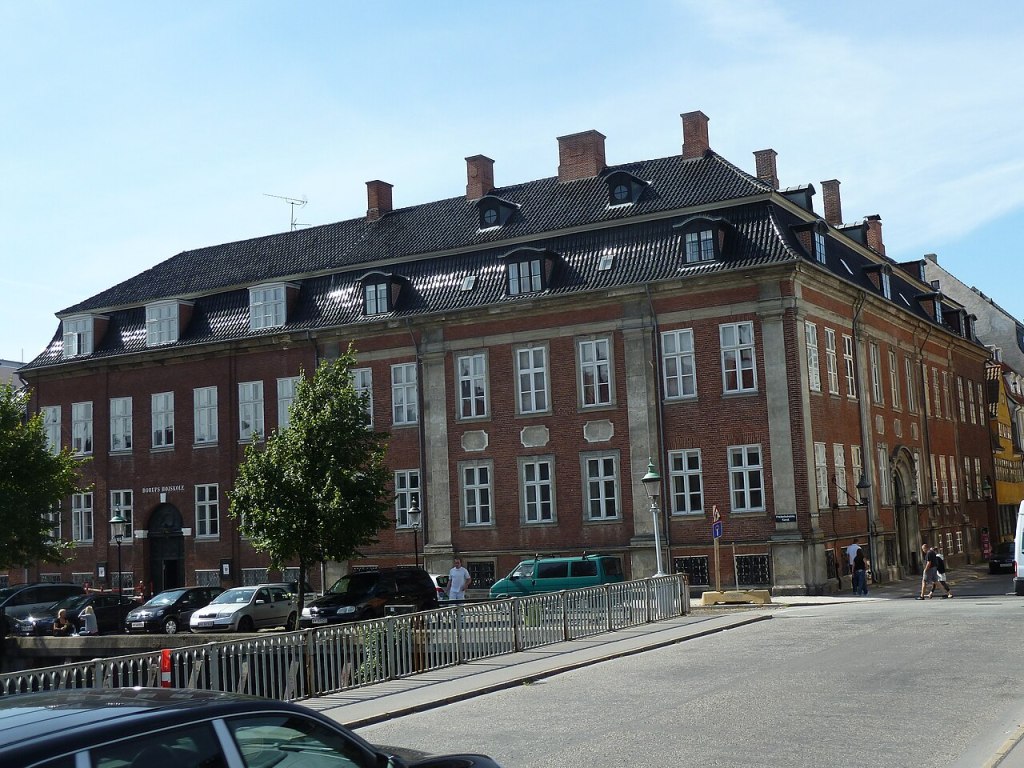
Moving on to the branch of Jarlsberg: the Kingdom of Norway had even fewer feudal titles than Denmark. The kings of Denmark had also been kings of Norway since 1380, and frequently appointed noblemen to govern Norway while they resided in Copenhagen. A new capital city for Norway was started in the 1620s by Christian IV which he named Christiania (today called Oslo), and in the 1660s-70s, his successors began to create a higher aristocracy by creating feudal counties in the region around the capital that were given to senior Danish officials such as the Viceroy, Ulrik Frederik Gyldenløve, illegitimate son of King Frederick III. In 1672 he was created Count of Tønsberg, a town and district in the Vestfold, the region west of Christiania. He built a manor near the town which he named Jarlsberg, or ‘earl’s hill’. The county and the manor were sold in 1683 to the commander of Danish troops in Norway, Field Marshal Gustav Wilhelm von Wedel (naturalised two years before as a Danish baron), who was then created Count of Jarlsberg, changing the name of the county after the manor house.
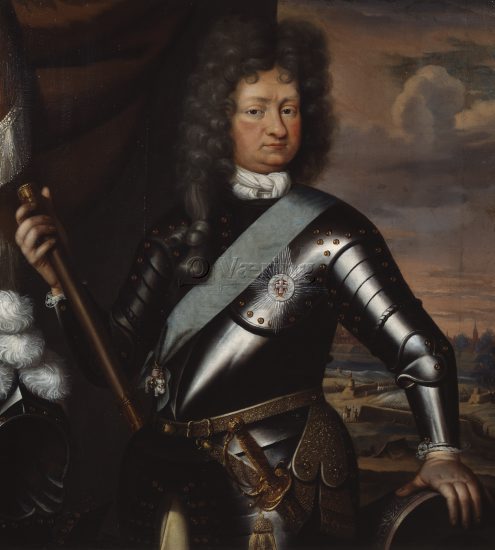
As with the Danish county of Wedellsborg above, Jarlsberg was a lensgreve, giving its possessor significant territorial authority. The manor house was rebuilt after a fire in the 1690s, and again in 1812 in ‘empire style’. It is still today one of Norway’s largest private estates, though its feudal privileges were abolished in 1821.
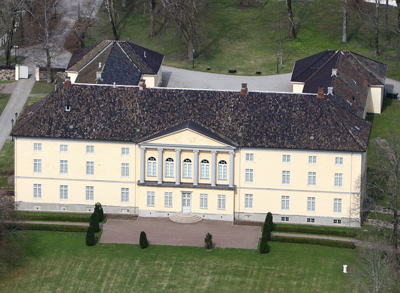
Before coming to Norway, Count Gustav Wilhelm had married an heiress from East Friesland (on the German North Sea coast) and had two sons: the eldest, Georg Ernst succeeded as Count of Jarlsberg (or Count Wedel af Jarlsberg), while the younger Erhard Frederik inherited the estate of Evenburg in East Friesland from his mother and founded a separate line, to which we will return below.

In the eighteenth century, the Jarlsberg branch became more fully entrenched in the Danish nobility, acquiring manors in Denmark such as the fifteenth-century manor of Ravnstrup in southern Zealand for a younger son.

At the end of the century, two brothers rose to become the most prominent members of the family in Norwegian history. They were the sons of a diplomat, so both were born abroad, Herman in Montpellier and Ferdinand in Naples. They were raised for a time in London, so both had a cosmopolitan outlook which helped them establish their positions later in life. Herman was appointed governor of Buskerud County, Norway, in 1806, by King Christian VII of Denmark-Norway, but already the winds of change were sweeping across the Scandinavian kingdoms. In 1809, the Swedes decided to replace their king with another and several Danish lords, including Herman Wedel-Jarlsberg, were put forward as candidates before they settled on Marshal Bernadotte. In April 1814, Wedel-Jarlsberg was elected to the Constituent Assembly of Norway that met at Eidsvoll to draft a constitution for an independent kingdom, and was a vocal member of the Union Party that advocated a dynastic union between Norway and Sweden. Some saw these as traitors to Norwegian independence, but Wedel-Jarlsberg saw union with Sweden, which already had a constitution, as the best way to secure this independence, rather than return to its dependence on more absolutist Denmark.
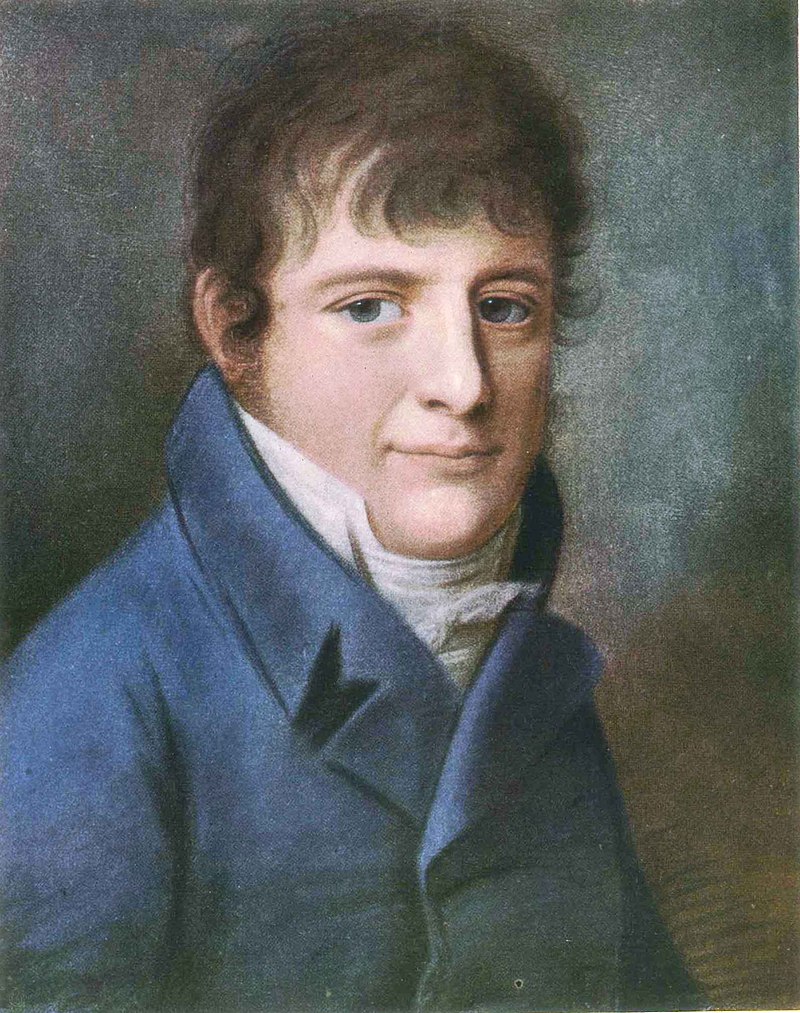
Herman had succeeded his father as Count Wedel of Jarlsberg in 1811, and later in 1814 was appointed by the new king of Sweden-Norway as Minister of Finance for Norway—for the next 25 years he was one of the leading forces in the Norwegian government. After his time as Minister of Finance ended in 1822, he was elected to the Storting (parliament) in 1824, and twice served as its president (1824 and 1830). In 1836, King Karl XIV Johan (the former Marshal Bernadotte, Karl III of Norway) appointed him Governor-General of Norway, a position he held until his death in 1840. As Governor-General, he was often called upon to smooth out relations between the Norwegian Storting and the King in Stockholm. His wife, Karen Anker was also influential, as Mistress of the Court of Norway.

Their son was Count Peder Anker Wedel-Jarlsberg (who used his mother’s maiden name as his second name, and inherited many properties from her family). Although the feudal privileges of the county were abolished in the 1820s, he was allowed to keep the rank until he died in 1893. From the Ankers he inherited a country house on the northwest outskirts of Oslo (Bogstad). In the 1860s his father was honoured with a square in the redeveloped inner harbour area, Count Wedel Square; by the 1930s it had become a parking lot, but it was restored as a park in the urban regeneration of the 1980s.
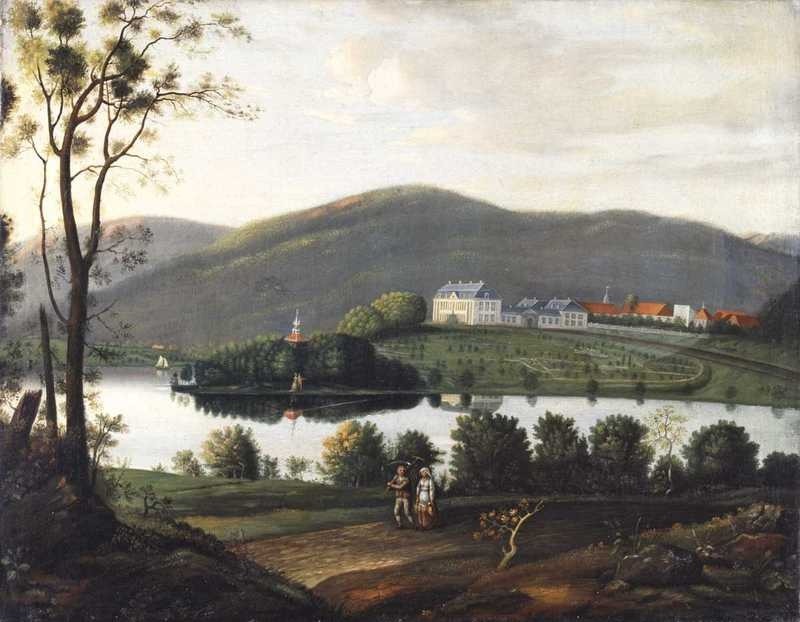
Count Herman’s younger brother, Ferdinand (titled Baron Wedel-Jarlsberg, as only the head of the family bore the title count), was initially an officer in the Danish army, rising to the rank of cavalry captain (rittmester) in 1804, and appointed a court chamberlain in Denmark in 1809. In 1814, he attached himself to the new Norwegian army, and by 1823 was a major-general and head of the cavalry, and by 1833 a lieutenant-general. In 1836, the same year as his brother’s appointment as Governor-General, Ferdinand was appointed Commander of the Norwegian army. At court he was Grand Chamberlain in 1839, and from 1844 until his death in 1857, was head of the court of Norway for King Oskar I.

Ferdinand had two children: Herman was a commander in the Norwegian navy, while Juliane became a leader of the court in Norway. She had started off as maid of honour to Queen Josephine (wife of Oskar I), then was appointed Mistress of the Household for Queen Louise of Sweden-Norway (wife of King Carl XV of Sweden, IV of Norway), in 1859. The Norwegian court was quite small—she was mistress of only two other women, while her counterpart in Sweden looked after six. The court of Norway stayed in Norway, and took over service to the monarchs when they received the king and queen at the border.

Juliane was married to her cousin, Baron Frederik Joachim (‘Fritz’), from the line of Wedel-Jarlsberg in Ravnstrup, now based at Brunla Manor in Larvik County, Norway (the county next to Jarlsberg). Fritz was, like his father-in-law, Grand Chamberlain of Norway until his death in 1880.
The son of Fritz and Juliane was Baron Frederik Hartvig (also known as ‘Fritz’), who like his great-uncle, was instrumental in negotiating the independence of Norway, this time from Sweden, in 1905. He had been a diplomat for years, first in Vienna and London, then representing both Sweden and Norway in Madrid (1891-97 and again 1902-05), then for Norway only in France. In 1920 he worked to attain Norway’s sovereignty over the Svalbard archipelago in the Arctic Sea, and Wedel-Jarlsberg Land there is named for him. (Note: the Weddell Sea in Antarctica is not connected to this family, named for a Scottish captain, James Weddell).
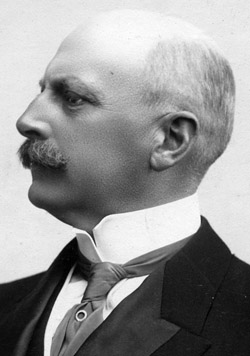

In 1909, Baron Fritz Wedel-Jarlsberg purchased a country manor southwest of Oslo called Skaugum, which he redesigned in the style of a Swiss chalet. In 1929, he gave Skaugum as a wedding gift to Crown Prince Olav. It remains the home of the Norwegian crown prince, though it looks quite different as it was rebuilt in the 1930s.
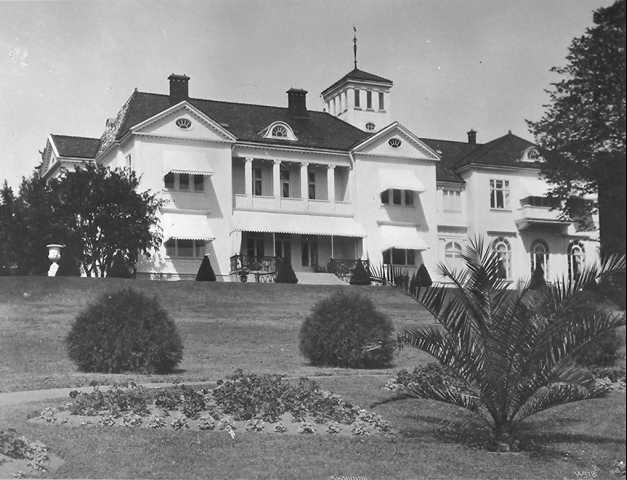
The old baron had become a close advisor to Prince Olav (King Olav V after 1957), but in the 1930s left Norway to settle in Paris with his new wife, American heiress Mary Palmer; they then moved to Lisbon where he died in 1942.
Count Peder Anker Wedel-Jarlsberg’s grandson, also called Peder Anker, became head of the family in 1946. He too was close to the Norwegian royal family, having been adjutant to King Haakon VII since 1913, then a chamberlain in 1925, then Grand Chamberlain of the Court from 1931 to 1945 .He was one of the King’s closest confidants, and was sent to accompany Crown Princess Martha in the United States when Norway was occupied by Nazis in 1940—as seen in the recent television series ‘Atlantic Crossings’. His great-grandson, Carl Nicolaus (b. 1973), is the current head of the family. Though no longer having any noble privileges, he still uses the title Lansgreve, the only Norwegian of this rank today.
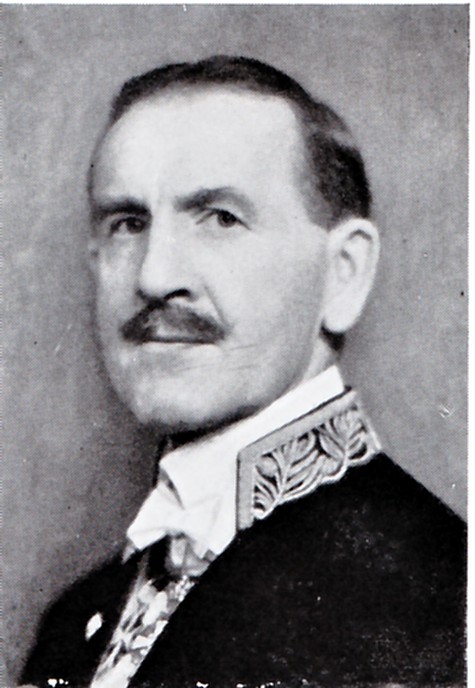
Finally we turn to the Evenburg branch—and to our one and only Wedel prince! The founder of this line, Erhard Frederik Wedel-Jarlsberg, acquired the Evenburg estate from his mother, located southeast of Emden, the capital of the County of East Friesland. This baroque castle on the edge of the town of Leer on the river Ems had been built in the mid-seventeenth century by Baron von Ehretreuter and named for his wife Eva. The family was based here in the next two centuries, as well as a new building nearby called Philippsburg. It was re-modelled in neo-Gothic style in the mid-nineteenth century, with extensive gardens. The Counts of Wedel-Jarlsburg in Evenburg, developed the agricultural estate and local forests. From the 1930s, they moved their main residence to Schloss Gödens, on the other side of East Friesland.
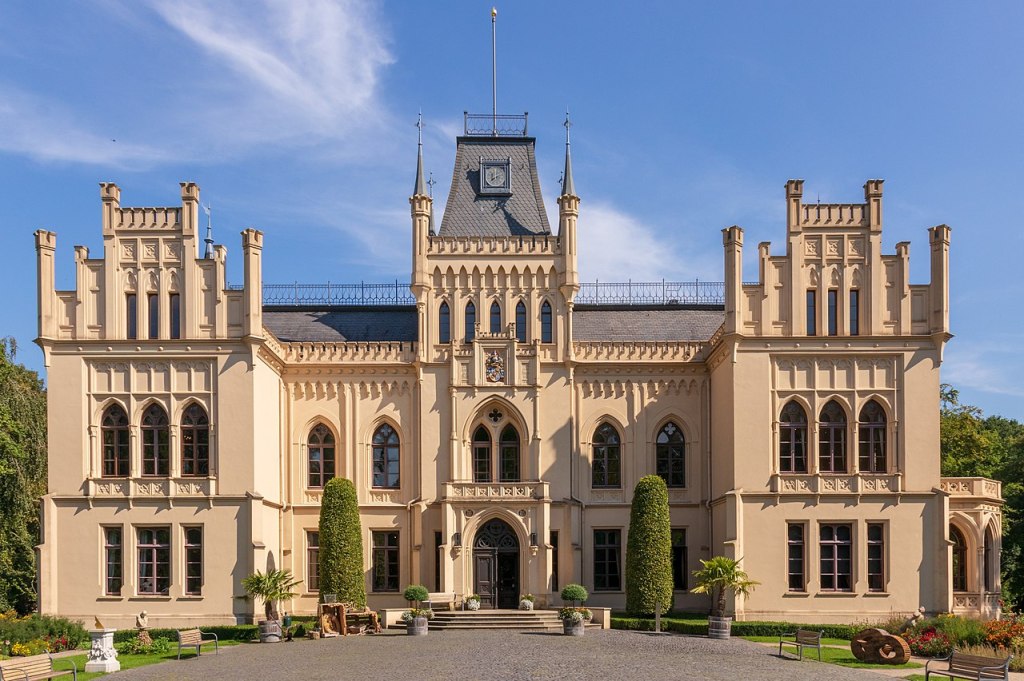
Gödens is located near a bay of the North Sea and the city of Wilhelmshaven. There was castle here in the fourteenth century, destroyed in 1517, so a new residence was built a short distance away, with a complex triple moat. It was rebuilt again after a fire in the 1670s, as a Dutch baroque palace. In 1746 it was acquired by the Wedel-Evenburg family by marriage to the heiress of the Frydag family. This is watery countryside; there are canals and drainage systems everywhere. The family still lives here today, with only limited access by the public.
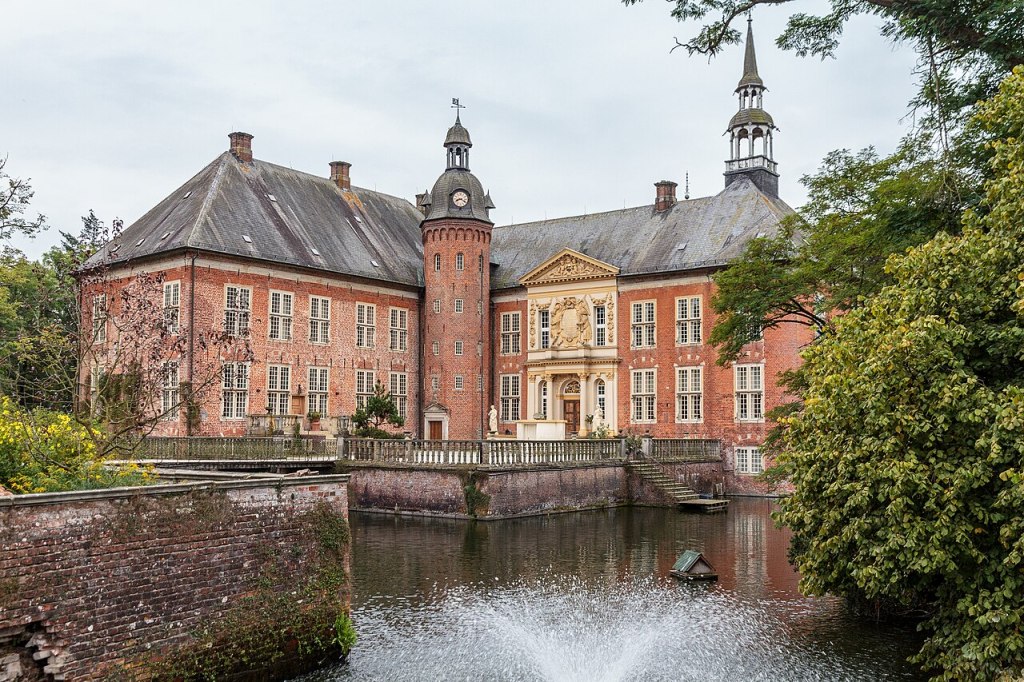
Meanwhile, Evenburg declined after the family left in the 1930s, and was used as a hospital and a school until it was acquired by the district of Leer in 1975. In the last decade it has been renovated and reopened as a museum of nineteenth-century noble life and gardening culture.
Baron Erhard Frederik von Wedel’s son, Anton Franz, was elevated to the rank of count by the King of Prussia in 1776, and given a seat in the Prussian House of Lords. At court in Berlin he served as a chamberlain and a privy councillor.
This Frisian branch proliferated in the nineteenth century, with many many sons and daughters, spread out by service or marriage to courts from the Kingdom of Hanover to the Grand Duchy of Oldenburg. Both Hanover and Oldenburg were adjacent to East Friesland, so were convenient stepping stones to more prestigious posts in Prussia, especially once the German Empire was unified after 1870. One was Master of the Horse for the Grand Duke of Oldenburg, while another was Master of the Household of the Grand Duke of Saxe-Weimar. Wedel daughters served as ladies-in-waiting at courts all across northern Germany.
One of the most prominent was Count Ernst August (d. 1913), who began his career in service to the King of Hanover and even followed him into exile in Austria after his defeat by the Prussians in 1866. He later returned north and joined the court in Berlin where he was appointed an equerry by Kaiser Wilhelm II and ultimately was his Master of the Horse, 1891 to 1905, a close member of the emperor’s inner circle.
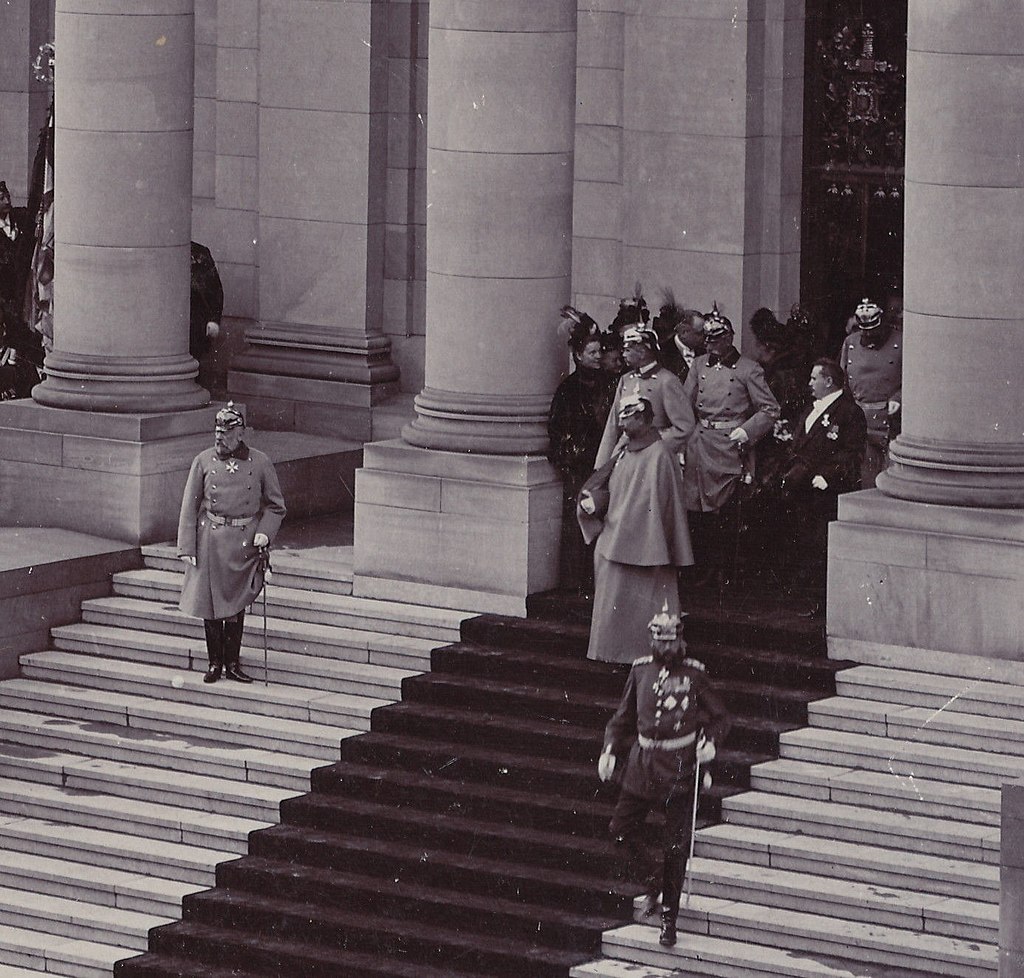
A cousin, Count Friedrich Wilhelm (d. 1872), was a lieutenant-general in the army of Oldenburg, and became Head of the Department of Military Affairs and Chief of Staff of Grand Duke Peter II. His older son Wilhelm joined the Prussian army in the 1850s and retired as a Major on the General Staff in 1871; after this he was appointed Landrat (or administrator) of the Lüdinghausen District in Westphalia (near Münster), from 1875 to 1905. He acquired by marriage a grand castle in this same district, Sandfort Castle—built in 1450 with two great round towers. It is still owned by his female descendants today.
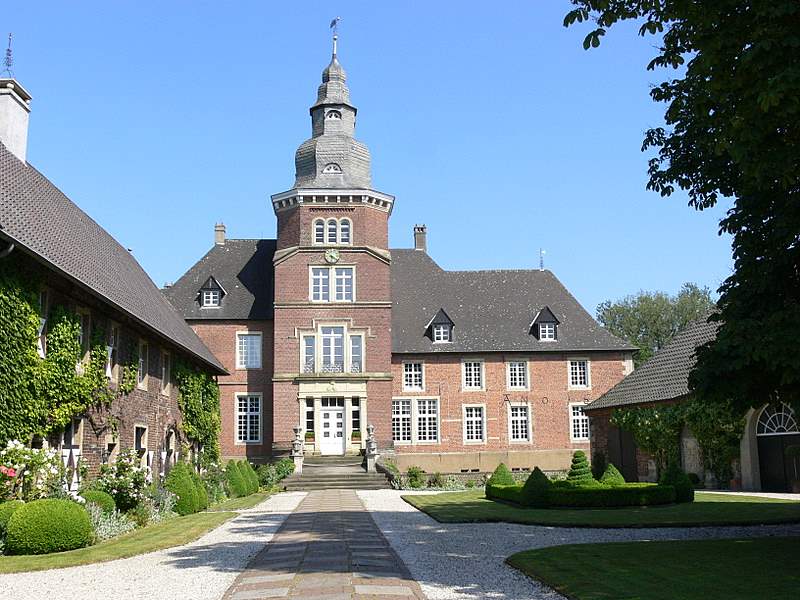
Count Wilhelm’s younger brother Karl was born in Oldenburg in 1842. He joined the Hanoverian army then switched to Prussian service in 1866, and was a major by 1876, and aide-de-camp of Kaiser Wilhelm I in 1879. By the mid-1880s, while his brother moved into administration, Karl entered diplomatic service, first working in Russia and Bulgaria. By the 1880s, he was part of Chancellor Bismarck’s circle (so was disliked by the more liberal Crown Prince and Crown Princess), and in 1889 was appointed Major-General ‘à la suite’ of the new Kaiser, Wilhelm II. The Kaiser liked and trusted him, and sent him in 1891 as an envoy to Scandinavia to try to settle the rising tensions between Sweden and Norway—of course the fact that he was a member of the Wedel family made these connections easier. In 1897, Karl von Wedel was named Adjutant-General to the Kaiser and Governor of Berlin. He then returned again to diplomatic service, first as Ambassador to Italy in 1899, and then to Austria-Hungary in 1902.

The crowning point in Count Karl von Wedel’s career came when he was named Reichsstatthalter (imperial lieutenant or viceroy) of the Reichsland Alsace-Lorraine in 1907. Unlike other senior officials in the Kaiser’s government, he was liberal and conciliatory, with an open-minded approach to governing this restive territory, very much divided in its loyalties between Germany and France. He was able to negotiate with various factions to gain acceptance of a constitution for the province in 1911 that would grant it semi-statehood within the Empire—a degree of autonomy and self-governance, rather than government directly from Berlin. But he was forced to resign in April 1914 after the ‘Zabern Affair’, in which a young Prussian officer insulted the Alsatians in late 1913, and the Prussian military used violence to put down the ensuing protests. When the news of this mismanagement appeared in the press, it embarrassed the Kaiser, caused discussions in the Reichstag about the over-militarisation of society, and weakened relations between Alsace-Lorraine and the Empire. The viceroy was compelled to take the fall, and he resigned.
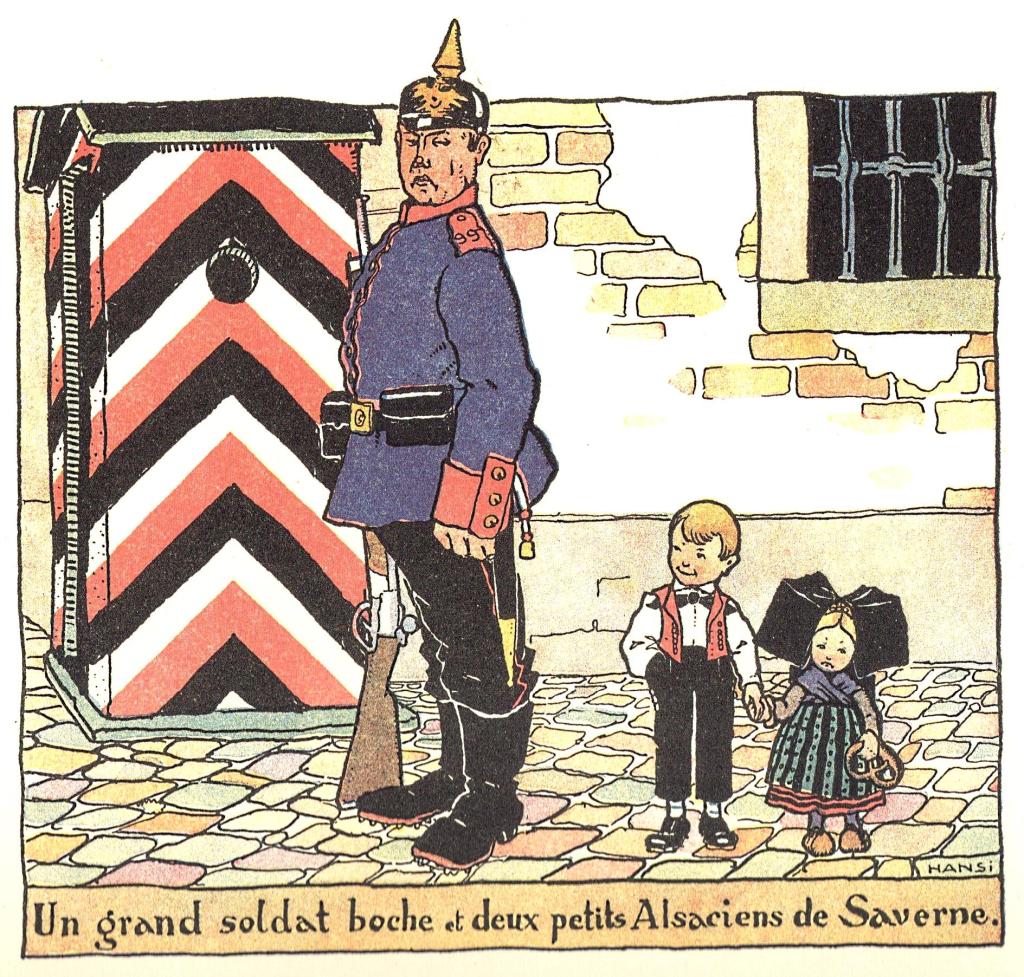
Still wishing to honour his old friend, however, the Kaiser created him Prince von Wedel soon after his resignation (with the style of ‘Serene Highness’). He was also retained as his Adjutant-General at the court in Berlin. The new prince’s career in the Foreign Office was not ended either, and he was sent again on special diplomatic missions to Austria-Hungary and to Romania in 1914 and 1915. In July 1916, he was president of the German National Committee for an Honourable Peace; he was opposed to other officials on the hard right who advocated a more aggressive means for ending the war.
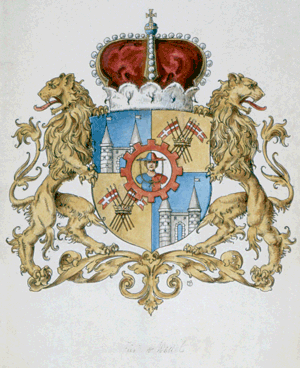
Following the revolution of November 1918, Prince von Wedel retired to his wife’s estate, Stora Sundby Castle in Sweden, in Eskilstuna, south of Stockholm. In the 1890s Count Karl had married a Swedish noblewoman, Stephanie Hamilton of Hageby, a woman known as one of Europe’s grand dames, famous for her charities. Stora Sundby, long the seat of the powerful Sparre noble family, had come to her as part of her settlement from her first marriage and she lived there until 1937. Her husband had died childless in 1919. There are still descendants of the Prince’s nephews, but I don’t believe any have put forward any claim to be the heir to this princely title.
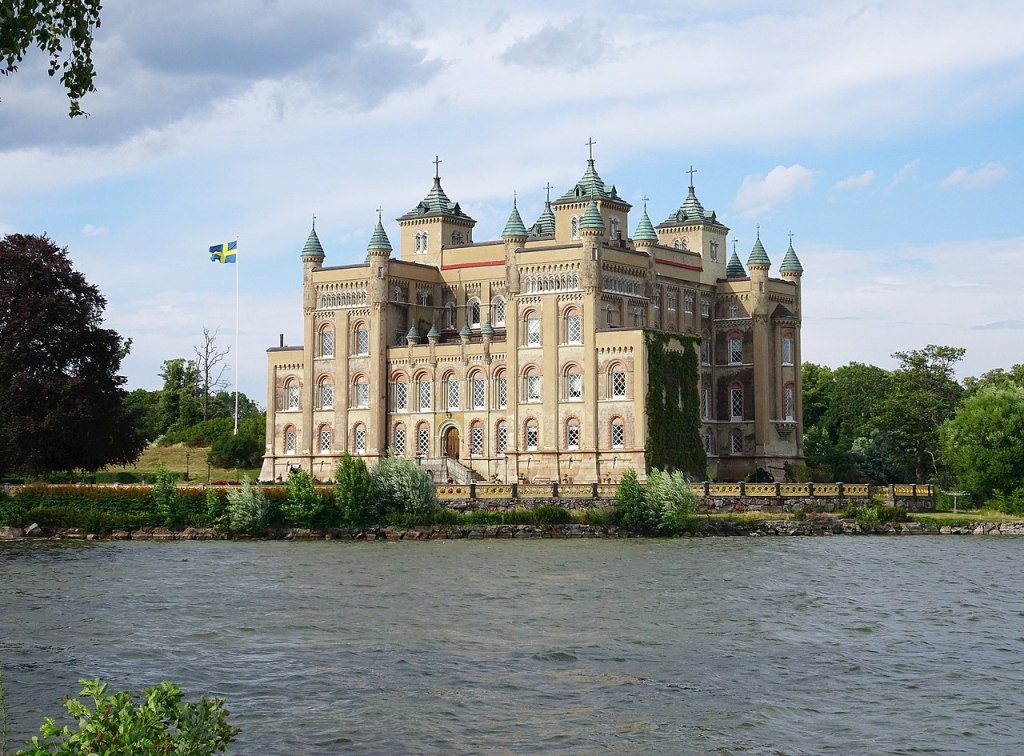
There is still a senior line of Counts Wedel-Everburg. Count Botho (d. 1943) was a diplomat who rose through the ranks at the German embassy in Paris in the 1890s, and later served as Ambassador to Austria, 1916-1919. He enlarged the family house at Philippsburg near Leer, but this was sold by his great-nephews to Leer Commune (as with Everburg itself) in 1975. The current head of this branch is Count Karl von Wedel or Gödens Castle (b. 1956).
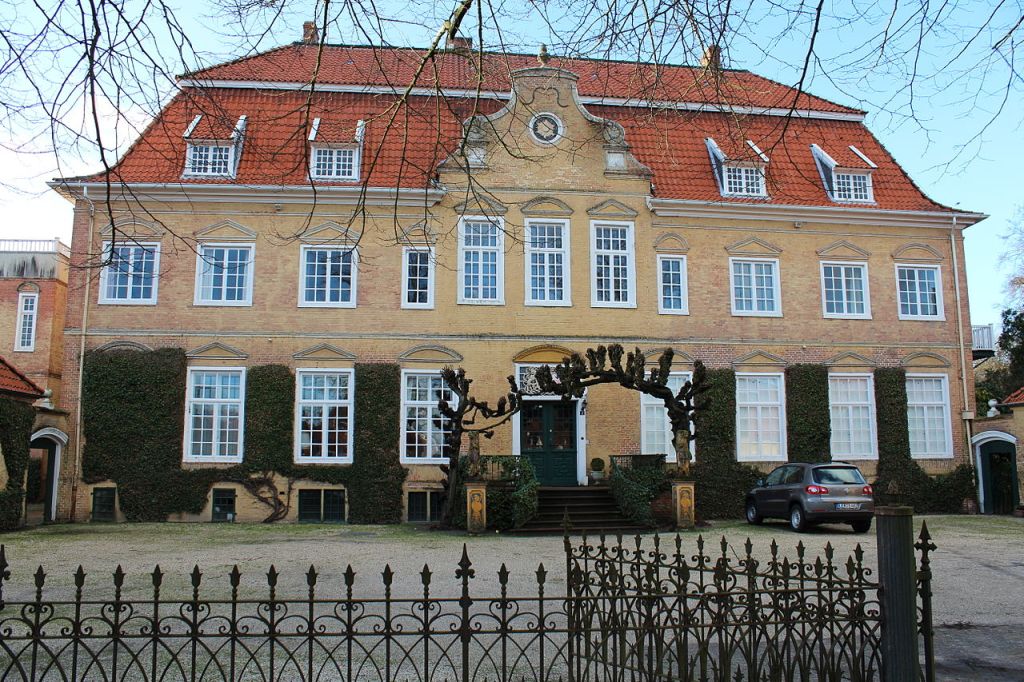
(images Wikimedia Commons)
Wonderful. All new to me. I will send it to a Norwegian friend Trond . I have jsjt been to germany and greiz, schloss of the elder line of Reuss, about whom you also wrote. It explains them very well and is the only castle or palace of the hundreds I have seen which has an organigramme of the household and government, discusses weddings and seating plans, and goes into the politics. (Perhaps because the visible works of art are pretty awful). The opposition to Bismarck makes them interesting – many caricatures. The newly opened parade rooms of Augustus the strong int he dresden schloss are amazing. Best Philip
LikeLike
thank you! I suspect Trond saw the link on Facebook or X, and I’m dreading his undoubtedly lengthy corrections… ha ha! I’d really love to visit those Reuss castles in Thuringia, but thoroughly enjoyed my driving tour in Denmark last month.
LikeLike
Thank you for this. I had a visit to Norway this past spring, and randomly discovered I was related to the Jarlsberg Wedels. I had decided I should take a closer look at, at least of the endless portraits I was cruising by. By sheer chance it was Marshal Gustav Wilhelm, 1st Count Wedel of Jarlsberg. My mother was born a Wedel so of course it peeked my interest. Later I discovered I am a direct descendent. I spent a couple of summers as a teen staying at castle Sandfort ( or Schloss Sandfort as we called it). My sister met her future husband there as a teen. My parents lived there for a while after the war. It was owned at the time by a cousin of my mothers. Thanks for filling in the history. I now live in Canada.
LikeLike
How nice to have a personal connection! Thanks for commenting.
LikeLike